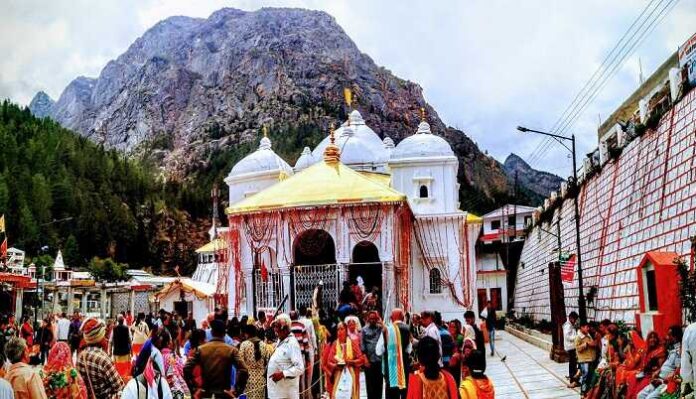Gangotri is one of the famous Hindu temples located in the Uttarakashi district of Uttarakhand. Gangotri is located at a height of 3,038 meters above sea level. Today we have shared 16 amazing facts about Gangotri temple that will surprise you for sure.
Gangotri, the origin of the River Ganga and seat of the goddess Ganga, is one of the four sites in the Chota Char Dham pilgrimage circuit.
The river is called Bhagirathi at the source and acquires the name Ganga (the Ganges) from Devprayag onwards where it meets the Alakananda. The origin of the holy river is at Gaumukh, set in the Gangotri Glacier, and is a 19 km trek from Gangotri.
Facts About Gangotri
1. Char Dham Pilgrimage Site of Uttarakhand
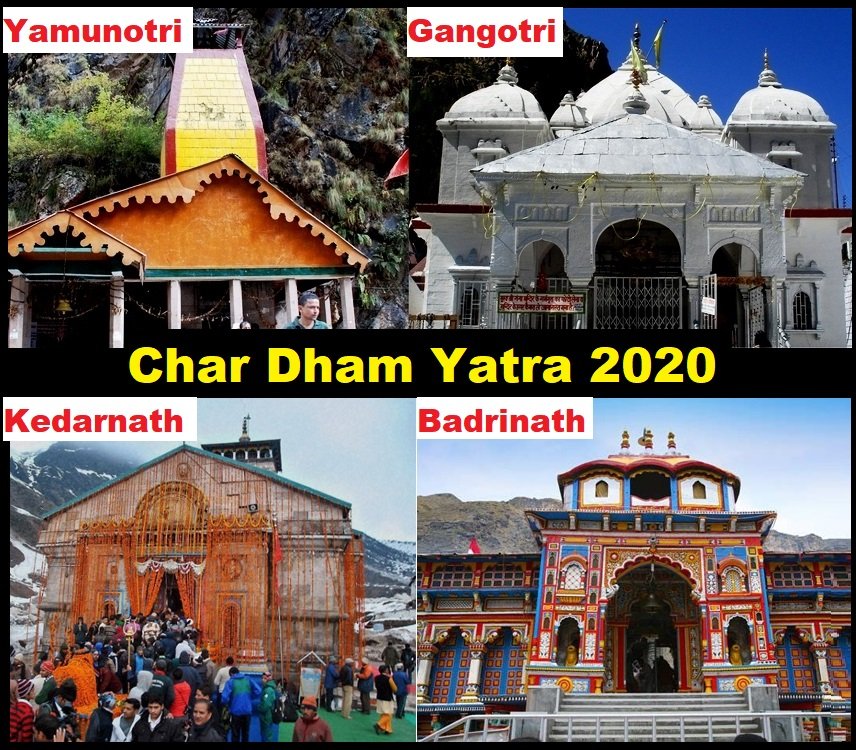
Gangotri temple is dedicated to the goddess Ganga and it is one of the four sites in the Uttarakhand Char Dham pilgrimage circuit.
These Char Dham temples are Yamunotri, Gangotri, Kedarnath, and Badrinath and all are situated in Uttarakhand. That is why it is also known as the “Chota Char Dham Yatra of Uttarakhand”.
Complete Travel Guide
- Kedarnath Yatra 2023 Guide
- Badrinath Yatra 2023 Guide
- Gangotri Yatra 2023 Guide
- Yamunotri Yatra 2023 Guide
2. Origin of River Ganga – Facts About Gangotri
Gomukh glacier in Gangotri is believed to be the place of origin of Goddess River Ganga (Bhagirathi) which is 19 kilometers away from the main Gangotri Temple.
3. Situated in the Himalayan Region
Gangotri is surrounded by mountains on all sides and lies in close proximity to the Indo-China border. It is known for offering peace and tranquillity to its visitors.
4. Remains Close for 6 Months – Fact About Gangotri
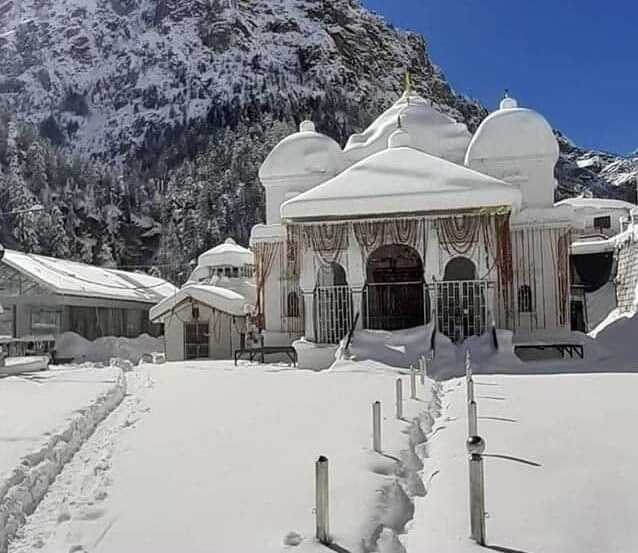
The height of all the temples in Chota Char Dham of Uttarakhand is more than 3000 meters above sea level. All four temples including Gangotri remain closed for 6 months in the winter season and open for 6 months in the Summer season.
Must Read Other Facts:
The reason for closing in the winter season is heavy snowfall in the high-altitude Himalayan region which makes weather conditions extremely cold and also the whole area is covered by a thick layer of snow.
5. Mention in All Purans – Historical Fact About Gangotri
The most description of the glory of Ganga is found in the Puranas. According to all the Vedas and Puranas, River Ganga is considered the most sacred river not only in India but for all mankind.
In all Puranas like Vishnu Purana, Vayu Purana, Shiva Purana, Brahma Purana, Matsya Purana, Narada Purana, Markandeya Purana, Skanda Purana, Agni Purana, Vamana Purana etc. you can find a detailed description of Goddess Maa Ganga.
History of Char Dham Temples
6. Deity of Goddess Ganga – Facts About Gangotri
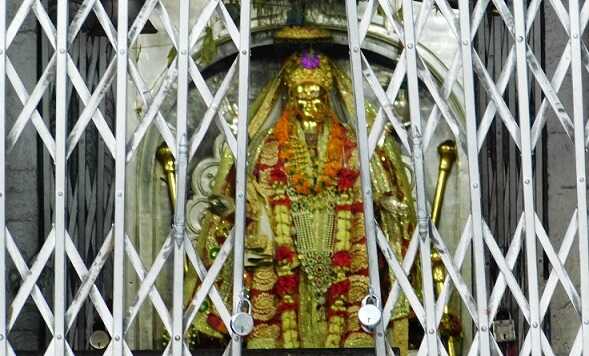
In the temple pride, there are exquisite sculptures of Yamuna-Ganga ornamented with ornaments. The idols of Mahalakshmi Mata, Annapurna Maa, Saraswati Maa, Bhagirath, and Adi Guru Sankaracharya are also placed nearby.
7. Priests of Gangotri – Fact About Gangotri
Maharaja Amar Singh Thapa appointed the Priests of Mukhwa to worship the Gangotri temple. The Khas Rajputs of Taknor are the priests of Gangotri before Mukhwa Priests.
8. Winter Residence (शीतकालीन निवास) – Facts About Gangotri
The residents of Mukhwa village consider Goddess Ganga as the sister of the village deity Someshwar. The one who comes to her maternal village Mukhwa to tie Rakhi to his brother on Bhai Dooj and resides in Mukhwa in winter.
9. Daughter of Mukhwa – Facts About Gangotri
The people of Mukhba village have not only goddess-like feelings but daughter-like feelings with Ganga. On Akshaya Tritiya, when the doors of Gangotri are opened, the Bhoga idol of Ganga is sent off by the villagers of Mukhwa with the same custom as the daughter’s farewell.
10. Bhagirath Rock (Shila)
After descending the steps of the temple, there is a Bhagirath rock on the right bank of Bhagirathi. It is believed that King Bhagirath meditated deeply to Goddess Ganga, asking her to descend down to earth from heaven in order to provide salvation to the ashes of his ancestors who were cursed by Sage Kapil.
Now religious traditions and acts like Pind Daan are performed at Bagirath Shila.
11. Mukta Gufa (Pandavas Cave) Patangana
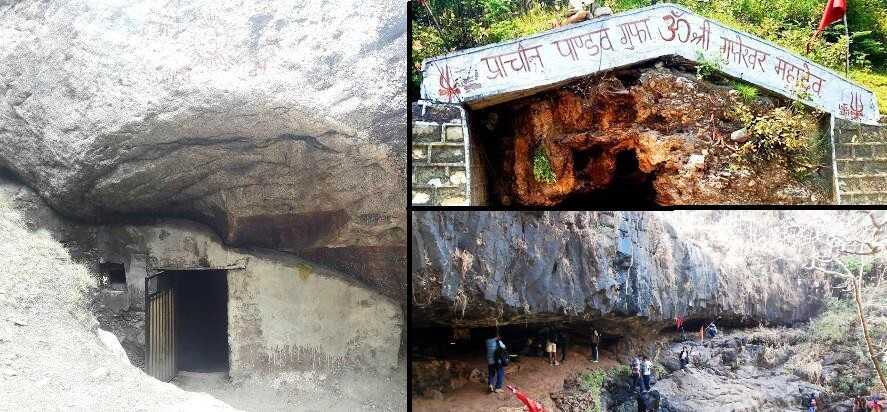
On the left bank of Bhagirathi at a distance of about one kilometer from Gauri Kund, there is a natural flat plain covered with rocks, which is known as Pandav Gufa or Patangana.
According to the belief, the Pandavas reached this place on the orders of Vyas Ji to atone for the sin of killing a Cow and With the help of sages, a great “Dev Yagya” was performed here and then they reached Kedarnath via the banks of Rudraganga.
And from there they proceeded towards the “Swargarohani mountain”.
12. Gauri Kund – Facts About Gangotri
At some distance from the Gangotri temple, in the western direction of Bhagirathi, there is a pool made of the waterfall, which is known as Gauri Kund.
The protruding part of the rock in this pool is called the natural Shivling. It is believed that Goddess Maa Gauri did penance at this place to attain Lord Shiva.
13. Kedarganga Sangam & Kedar-Tal
At a distance of 7 km from Gangotri, there is an attractive pond called Kedartal (Kedar Pond).
The origin of Kedar Ganga is believed to be from Kedartal itself, which ends its independent existence in Gangotri and merges with Bhagirathi.
14. Suryakund, Vishnukund, Brahmakund
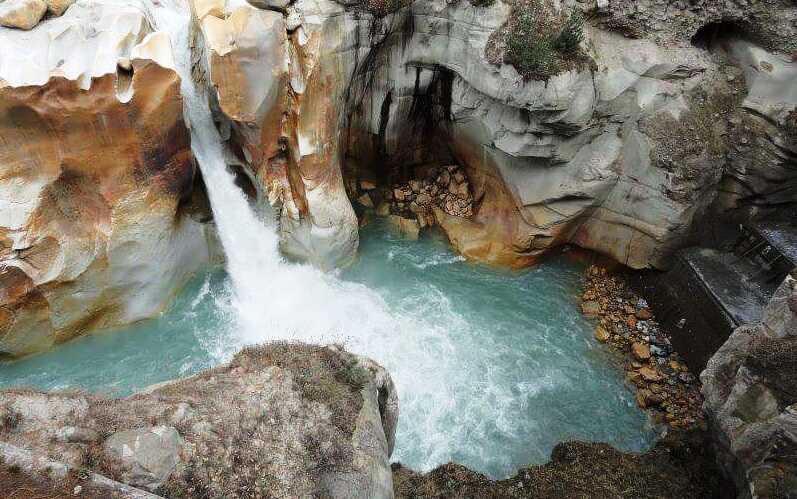
Famous Ponds named Suryakund, Vishnukund, and Brahmakund are also located in Gangotri. In which the importance of bath, charity, penance, etc. has been realized.
15. Maharishi Jahnu Muni Ashram
There is an ashram of Maharishi Jahnu Muni on the banks of the Jarganga at a place called Jangala. It comes in the route of Harsil on Gangotri Marg, after Tharali.
According to Chapter 37 of Kedarkhand, when the Ganga reached the best among the sages, the ashram of Jahnu Muni, Goddes River Ganga started flowing the worship material of Jahnu Muni.
- Seeing that action of River Ganga, the best among the sages “Jahnu Muni” got angry and took Ganga in his hand and drank the whole Ganga.
- With this great surprise, King Bhagirath became very sad and went to the ashram of Jahnu Muni and started requesting and praying to release Goddess Ganga.
- Satisfied with the request, Jahnu released Ganga from his knee and said that Ganga will now be known as my Papanashini daughter Jhanvi.
16. Jumping Point, Bhairon Jhap (प्राणोत्सर्ग स्थल, भैरोंझांप)
On the left bank of Bhagirathi in Gangotri, to the left of the main temple, there is a mountain known as Bhairon Jhap Hill.
According to Legends, in ancient times many travelers used to climb this rock and give up their lives by falling from this mountain to wish for heaven. This is the reason it is named Jumping Rock Point, Death Point, and Pranotsarg Sthal.
Explore Gangotri…
